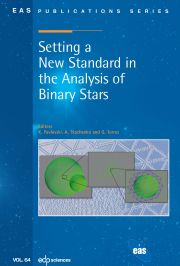Article contents
Dynamical Processes in Debris Disks
Published online by Cambridge University Press: 06 January 2010
Abstract
Debris disks are dusty and/or gasous disk that are viewed in scatteredlight and thermal emission around stars around 107–108 yr. It is well known that the dust in these system is not primodial. It isshort lived and must be continuously replenished by collidingplanetesimals. Most of them appear distorted by the gravitationalpertubations by inner planets or stellar companions. This is why thesesystems are viewed today as young planetary systems. Debris disks are collisional systems. Thanks to collisional cascadetowards smaller size, the dust particles are transported outwards byradiation or stellar wind pressure. Below a given blow-off size theyescape the system. This model explains the radial density profiles observed. The various asymmetries, clumps and other dynamical structures such as spiral arms are though to originate in gravitational perturbationsby planets and/or companions. Planets usually create gaps in disks,but they also sculpt disks via their mean-motion resonances. Clumpystructures are often invoked as resulting from such an interaction.Stellar companions usually truncate the disk, sometimes confining themto thin annular structures. They also help creating spiral patterns,either tidally or by secular interaction. In this context, thesituation is different whether the perturbing companions are bound orjust passing stars. In any case, dynamical studies (often specific toeach system) can greatly help constraining the configuration and thepast history of these systems.
Information
- Type
- Research Article
- Information
- Copyright
- © EAS, EDP Sciences, 2010
References
- 2
- Cited by

